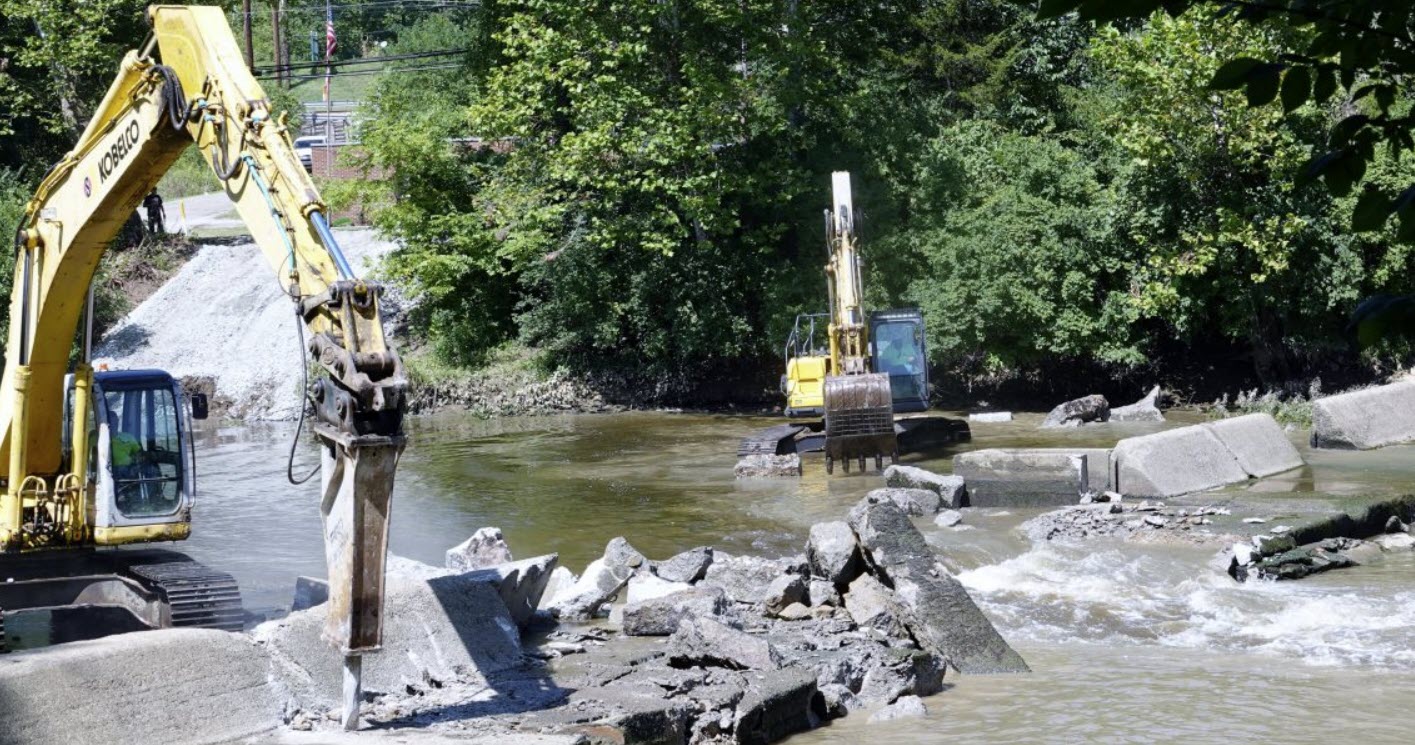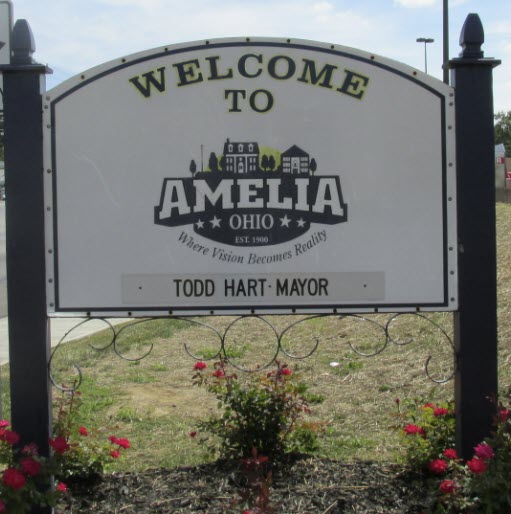A short distance up-stream from the Main Street Bridge, across the East Fork Little Miami River, a low-head dam was constructed to form a pool of water from which Batavia drew its water supply. In recent years the village switched from producing its own water supply to obtaining water from Clermont County.
The Ohio EPA made an Environmental Assessment of the dam and concluded “Low-head dams can be dangerous, as they increase the risk of injury and drowning for those who fish, swim or boat near the structure. Low-head dams also ruin river habitat because the dam creates an unnatural lake-like pool upstream of the structure. The dam also prevents the normal migration of fish and other species by essentially creating a wall in the river channel. Removal of the dam would remove the barrier and restore the river to a natural, free-flowing condition. Over time the diversity and abundance of native fish, mussels and other species will improve.”
The U.S. Corps of Engineers was mandated by the National Historic Preservation Act (NRHP)to ensure that removal of the dam would not impact a historic resource. The Corps hired the firm Weller & Associates, Inc. to make a historic review of the site. Their report of the findings and in consultation with the Ohio History Connection it was determined that the proposed undertaking would have an adverse effect on the NRHP eligible. “In order to compensate for the adverse to the Batavia Low-Head Dam, it was proposed to develop an interpretive sign to provide context and information on the history and significance of the Batavia dam, and to signify the former presence of the dam. The sign would be illustrated with current and historical photographs and will be accessible to the general public along the top of the riverbank overseeing the original location on the dam.”
Demolition of the dam was started on September 4, 2019 and completed the next day. Funding for the project came from grants of $760,000 from the Water Resources Restoration Sponsorship Program, Ohio EPA: $60,000 from the U.S. Fish and Wildlife Service and from the Metropolitan Sewer District of Cincinnati.
By Ron Hill




